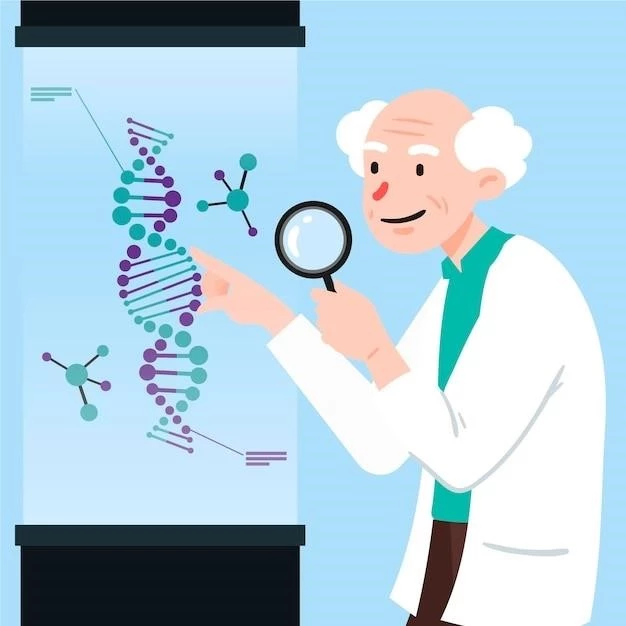Introduction to Stickler Syndrome
Stickler syndrome was originally described by pediatrician Gunnar B. Stickler in 1965 as hereditary progressive arthro-ophthalmopathy. It is a systemic disorder characterized by defective collagen production associated with ophthalmologic, auditory, facial, and joint manifestations.
Stickler syndrome, a connective tissue disorder, affects collagen production leading to various manifestations such as ophthalmologic issues, auditory effects, facial abnormalities, and joint complications. Understanding the diverse clinical presentation of Stickler syndrome is crucial for accurate diagnosis and tailored treatment approaches.
Causes and Genetic Basis
Stickler syndrome is a genetic disorder caused by mutations in collagen genes, impacting collagen production essential for connective tissue integrity. These mutations result in the wide array of associated symptoms across different organ systems.
Role of Collagen Mutations
Collagen mutations play a key role in Stickler syndrome, affecting the structural integrity of connective tissues. The genetic alterations lead to the diverse phenotypic manifestations observed in individuals with Stickler syndrome, emphasizing the importance of genetic analysis in diagnosing and understanding the disease.
Overview of Stickler Syndrome
Stickler Syndrome is a connective tissue disorder with systemic effects, impacting collagen production and leading to diverse symptoms involving the eyes, ears, face, and joints. Early recognition and management are crucial for individuals with Stickler Syndrome.
Varied Phenotypic Expression
The varied phenotypic expression of Stickler syndrome encompasses a range of symptoms affecting multiple organ systems, including the eyes, ears, face, and joints. Individuals may present with diverse clinical manifestations, highlighting the complex nature of this genetic disorder.
Ophthalmologic Manifestations
Ophthalmologic manifestations of Stickler syndrome include issues like cataract, glaucoma, vitreous abnormalities, and congenital megalophthalmos. Proper management and regular eye screenings are vital for individuals with Stickler syndrome to maintain optimal visual health.
Impact on Vision⁚ Cataract, Glaucoma, and More
The impact of Stickler syndrome on vision is significant, with conditions like cataracts, glaucoma, vitreous abnormalities, and congenital megalophthalmos affecting individuals. Regular eye examinations and targeted interventions are crucial in managing these ophthalmologic manifestations for better visual outcomes.
Auditory Effects
Auditory effects of Stickler syndrome encompass both conductive and sensorineural hearing loss, leading to challenges in sound transmission and reception. Regular audiological assessments and appropriate interventions are essential in managing the auditory manifestations associated with Stickler syndrome.
Conductive and Sensorineural Hearing Loss
Stickler syndrome often presents with both conductive and sensorineural hearing loss due to abnormalities in the middle ear and cochlea. Regular auditory evaluations and appropriate interventions play a crucial role in managing the auditory effects associated with Stickler syndrome, ensuring optimal hearing outcomes for affected individuals.
Facial Abnormalities and Cleft Palate
Individuals with Stickler syndrome may experience midfacial underdevelopment and Pierre Robin sequence, which involve distinct facial abnormalities and cleft palate. Early recognition and coordinated care are essential in addressing these facial manifestations associated with Stickler syndrome.
Midfacial Underdevelopment and Pierre Robin Sequence
Individuals with Stickler syndrome may exhibit midfacial underdevelopment and potentially present with features of the Pierre Robin sequence, involving distinct facial abnormalities and the presence of a cleft palate. Timely recognition and coordinated multidisciplinary care are crucial for addressing these complex facial manifestations associated with Stickler syndrome effectively.

Joint and Musculoskeletal Complications
Stickler syndrome can lead to early-onset degenerative joint disease, affecting the musculoskeletal system. Timely interventions and appropriate management strategies are essential to address these complications effectively and improve quality of life for individuals with Stickler syndrome.
Early-Onset Degenerative Joint Disease
Early-onset degenerative joint disease is a common complication of Stickler syndrome, impacting the musculoskeletal system. It is essential to implement early interventions and targeted management approaches to mitigate the progression of joint issues associated with Stickler syndrome and improve overall quality of life.
Diagnosis and Testing
Diagnosing Stickler syndrome involves clinical criteria evaluation and genetic analysis to identify collagen gene mutations that underlie the condition. Early detection through comprehensive testing is crucial for timely intervention and management of the diverse manifestations associated with Stickler syndrome.
Clinical Criteria and Genetic Analysis
To diagnose Stickler syndrome, healthcare providers rely on clinical criteria assessment and genetic analysis to identify specific collagen gene mutations responsible for the disorder. Early and accurate diagnosis through appropriate testing methods is crucial for initiating tailored management strategies and care plans for individuals affected by Stickler syndrome.
Treatment Approaches
To manage Stickler syndrome, a multifaceted approach is crucial. Implementing interventions tailored to individual needs, including ocular, auditory, facial, and musculoskeletal treatments, can help mitigate symptoms and enhance the quality of life for individuals with Stickler syndrome.
Managing Symptoms and Improving Quality of Life
Effective management of Stickler syndrome involves a comprehensive approach to address various symptoms and enhance the quality of life for individuals affected. Tailored treatments for ocular, auditory, facial, and musculoskeletal manifestations play a key role in symptom management, improving functional outcomes and overall well-being. Collaborating with a multidisciplinary healthcare team can provide holistic care to individuals with Stickler syndrome, ensuring personalized interventions and support to optimize their quality of life.
Prognosis and Long-Term Outlook
Understanding the disease progression in Stickler syndrome is crucial for long-term management. Early detection and comprehensive care can help individuals navigate the challenges associated with this genetic disorder and optimize their quality of life. It is essential to stay informed about the latest advancements in Stickler syndrome research to provide the best possible support and resources for individuals and families affected by the condition;
Understanding the Disease Progression
Understanding the disease progression in Stickler syndrome is crucial for long-term management. Early detection and comprehensive care can help individuals navigate the challenges associated with this genetic disorder and optimize their quality of life. Staying informed about the latest research and advancements in Stickler syndrome can aid in providing the best support and resources for those affected by the condition.
Support and Resources
Connect with organizations like Stickler Involved People and The Marfan Foundation for valuable information and assistance regarding Stickler syndrome. These groups provide support, resources, and guidance to individuals and families affected by the condition, offering a network of understanding and knowledge for navigating the challenges associated with Stickler syndrome.
Organizations Providing Assistance and Information
Organizations such as Stickler Involved People and The Marfan Foundation offer valuable support and information for individuals and families affected by Stickler syndrome. Seeking assistance from these organizations can provide access to resources, guidance, and a supportive community to help navigate the challenges associated with managing Stickler syndrome effectively.

Research and Advancements
Stay informed about the latest studies and breakthroughs in Stickler syndrome research to understand the condition better and explore innovative approaches for management. Research advancements play a crucial role in enhancing the diagnosis, treatment, and long-term outlook for individuals with Stickler syndrome.
Latest Studies and Breakthroughs in Stickler Syndrome
Stay updated on the latest studies and breakthroughs in Stickler Syndrome research to access innovative treatment options and improved management strategies for individuals affected by this condition. Advancements in understanding the genetic basis and varied manifestations of Stickler Syndrome can help enhance diagnostic accuracy and personalize care plans to optimize outcomes and quality of life for patients.
Conclusion
In conclusion, understanding Stickler syndrome’s complexity and manifestations is crucial for tailored management. Keeping up with advancements in research can enhance diagnostic accuracy and treatment outcomes. Remember, early detection, comprehensive care, and access to support resources are key in optimizing the quality of life for individuals with Stickler syndrome.
Importance of Early Detection and Comprehensive Care
Early detection of Stickler syndrome is crucial for timely intervention and management. Comprehensive care that addresses the diverse manifestations of the condition can significantly impact the quality of life for individuals with Stickler syndrome. By recognizing the importance of early detection and providing comprehensive care, healthcare providers and individuals can work together to navigate the challenges associated with Stickler syndrome effectively, ultimately improving outcomes and enhancing overall well-being.
